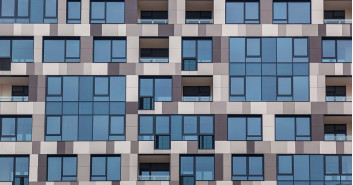10 Takeaways from McKinsey on Modular
McKinsey's report outlines several key benefits of modular construction, including significant cost and time savings, growth opportunities, and more.
This June, global management consulting firm McKinsey and Company published “Modular Construction: From Projects to Products,” a comprehensive report analyzing modular construction’s potential impact on the flailing construction industry and other sectors. Here are our 10 key takeaways:
1. Modular construction can reduce project timelines by as much as 50% and costs by as much as 20%.
As a result of utilizing pre-engineered designs when applicable and fabricating modular units while the foundation of the site is prepared, modular construction can reduce construction timelines by as much as 50% compared to traditional construction.
Increased efficiency, lower labor costs associated with manufacturing units along a production line, and consolidating operations under one or two contractors instead of many can reduce total costs by as much as 20%.
In addition to the raw savings, though, modularization provides even more opportunities to improve cost efficiencies—directly tied to its ability to shrink schedules and complete projects faster.
“Shorter project schedules are a huge advantage for developers that sell their units in blocks or rent them out,” reads the report. “It allows them to begin collecting revenue sooner, paving the way to higher internal rates of return, improved cash flow, and reduced market cycle risks.”
2. Not all modularization is the same.
Modular construction is a broad term often used to describe a number of building processes that vary in complexity and scale. On the low end of the spectrum is panelization, whereby teams build smaller segments of a building, such as individual walls, offsite, and connect them onsite. On the higher end are volumetric modular units, which are three-dimensional and complete with all walls, flooring, ceiling, and sometimes even finishes, such as cabinetry and appliances. These are then stacked onto the foundation.
According to the McKinsey report: “A 3D volumetric delivers the potential for maximum efficiencies and time savings.” iBUILT specializes in producing complete volumetric modular units for large-scale commercial construction.
3. There are seven key predictors of modular adoption.
While modular construction can create significant time and cost efficiencies, it is better suited for certain environments than others. The report identifies seven factors that should be taken into consideration to determine whether a location is ripe for modularization:
- Regulatory Conditions
- Access to Materials
- Quality Perception
- Supply Chain and Logistic Conditions
- Local Site Constraints
- Labor Availability
- Housing Demand
Of these McKinsey identifies labor availability and housing demand as the two most important indicators. Based on its analysis, the regions most likely to experience growth in modular construction are those undergoing a shortage in skilled construction labor with a high demand for new housing.
4. Modular construction has already gained popularity abroad.
Modular construction is not a new development, and has already been widely adopted in Scandinavia, for example. In fact, 45% of the current housing in Norway, Sweden and Finland was built modularly. That doesn’t appear to be the end of the expansion, either.
5. Modular construction has great potential in the United States.
One country showing promise for the expansion of modular construction, based on McKinsey’s seven factors, is the United States. Not all regions are prime for adoption, however. Major predictors considered, McKinsey suggests the West Coast would benefit most from modular construction.
6. The misperception of low quality must be overcome.
Since a brief boom in America following WWII, modular buildings gained the unfortunate misperception of being low-quality and unattractive.
“The industry will need to overcome lingering perceptions of the post-war era that prefab housing is only a poor-quality, cookie-cutter solution for the masses,” states the report.
McKinsey’s analysis supports Deluxe Modular’s assertion that constructing modularly doesn’t equate into boring or unoriginal buildings. Today, talented teams of designers can create a wide variety of modular units that combine to create unique and beautiful structures.
7. Modular construction is poised for widespread growth.
Modular construction has been around for decades, but has never made a significant foothold in America—rising in popularity in response to post-war demands for housing, but dwindling shortly thereafter.
The key difference today, states the report, is the rise of digital technology, which has enabled engineers to create stronger, more functional, and more beautiful modular designs than ever before, making it well-positioned to have a lasting impact.
8. Modular construction has more than real estate applications.
While the adaptability of the modular construction process naturally lends itself to producing high quantities of similar apartment units or condos in real estate, the possibilities don’t end there. As the report notes, modular construction can be applied to many industries to serve a number of functions.
9. Benefits extend beyond the construction industry.
In addition to the immediate benefits of the construction industry, the adoption of modularization would have advantages that ripple through other elements of society. Some of the wider-ranging effects of the efficiencies of the modular process include:
- Growth & Wage Increases for Companies Saving Money Through Modular Construction
- Safer Working Conditions for Construction Teams
- More Affordable & Higher-Quality Housing
10. Modular construction has its challenges, but an experienced team can eliminate these.
Modular construction boasts several important benefits that make it an excellent option for large-scale construction in the United States and throughout the world, but it does come with some challenges.
“Modular construction requires a significant shift in mindset and methods—not to mention the need to establish manufacturing environments,” notes the analysis.
In other words, this type of construction represents a very different approach to building than traditional construction in terms of design, building and installation.
That’s why owners and developers looking to maximize the benefits of modular construction should work with a firm with the experience to meet the demands of this innovative process with ease, such as iBUILT.
Source: McKinsey Global Institute 2019: Modular Construction, from Projects to Products.


